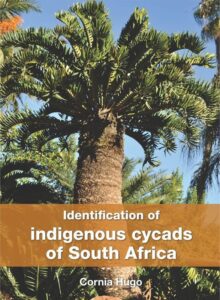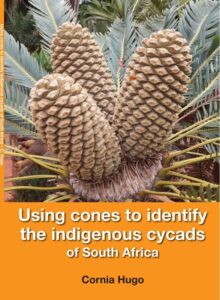Cycad Identification Books by Cornia Hugo
Books
Identification of indigenous cycads
R500,00
Books
Using cones to identify cycads
R295,00
E. inopinus
E. inopinus
E.inopinus male cones appear in November. Pollen shedding occurs during the months January – March.
E. frederici-guilielmi
E. friderici-guilielmi
E.frederici-guilielmi male cones appear in June. Pollen shedding occurs during the months August – November.
E. brevifoliolatus
E. brevifoliolatus
E.brevifoliolatus female cone appears during April – May. The cone disintegrates spontaneously during December.
E. ferox
E. ferox
E.ferox male cones appear in December – January. Pollen shedding occurs during February – May.
E. eugene-maraisii
E. eugene-maraisii
E.eugene-maraisii male cones appear in December. Pollen shedding occurs during February – March.
E. laevifolius
E. laevifolius
E.laevifolius (Kaapsehoop) female cones appear in May. The cones disintegrate spontaneously during January – March.





